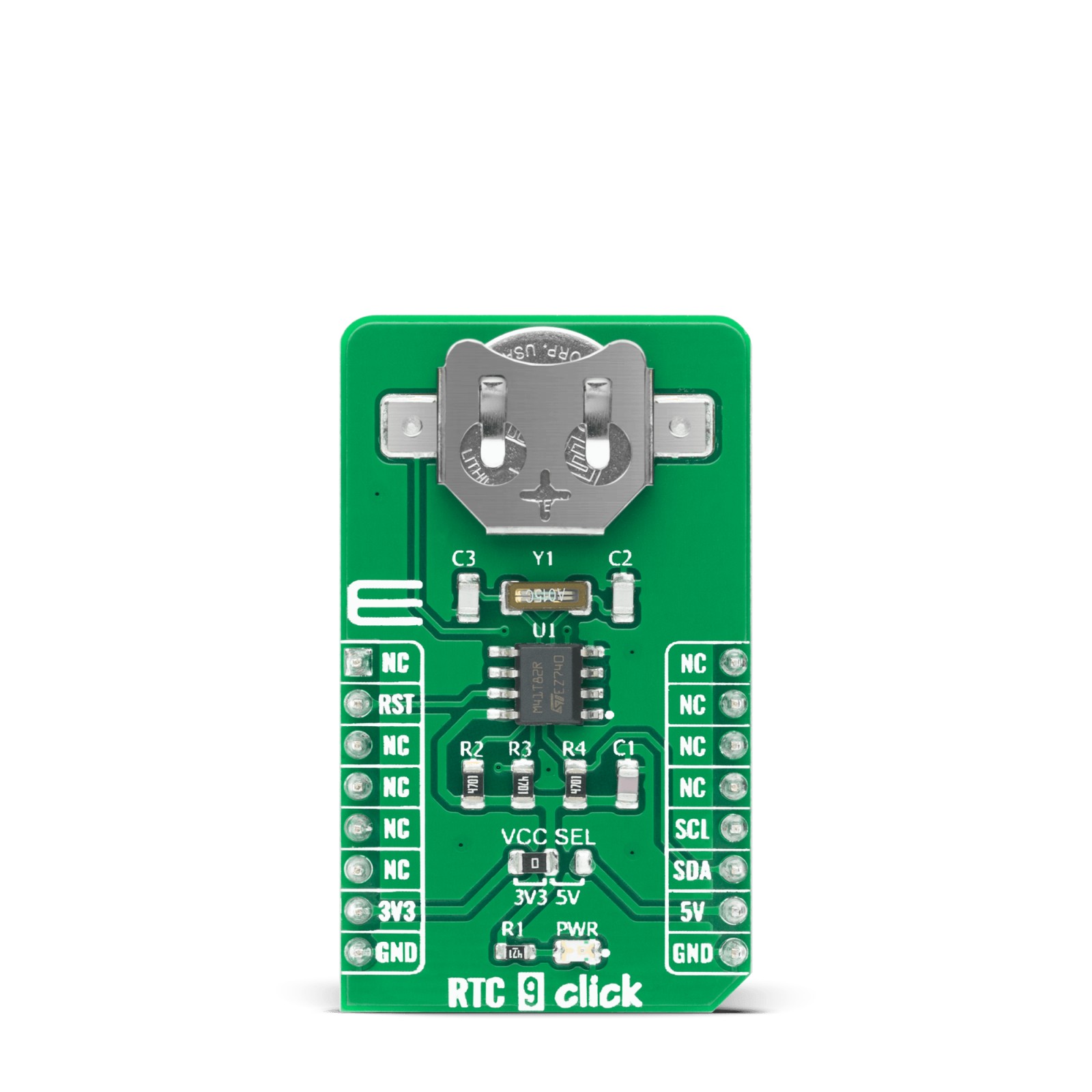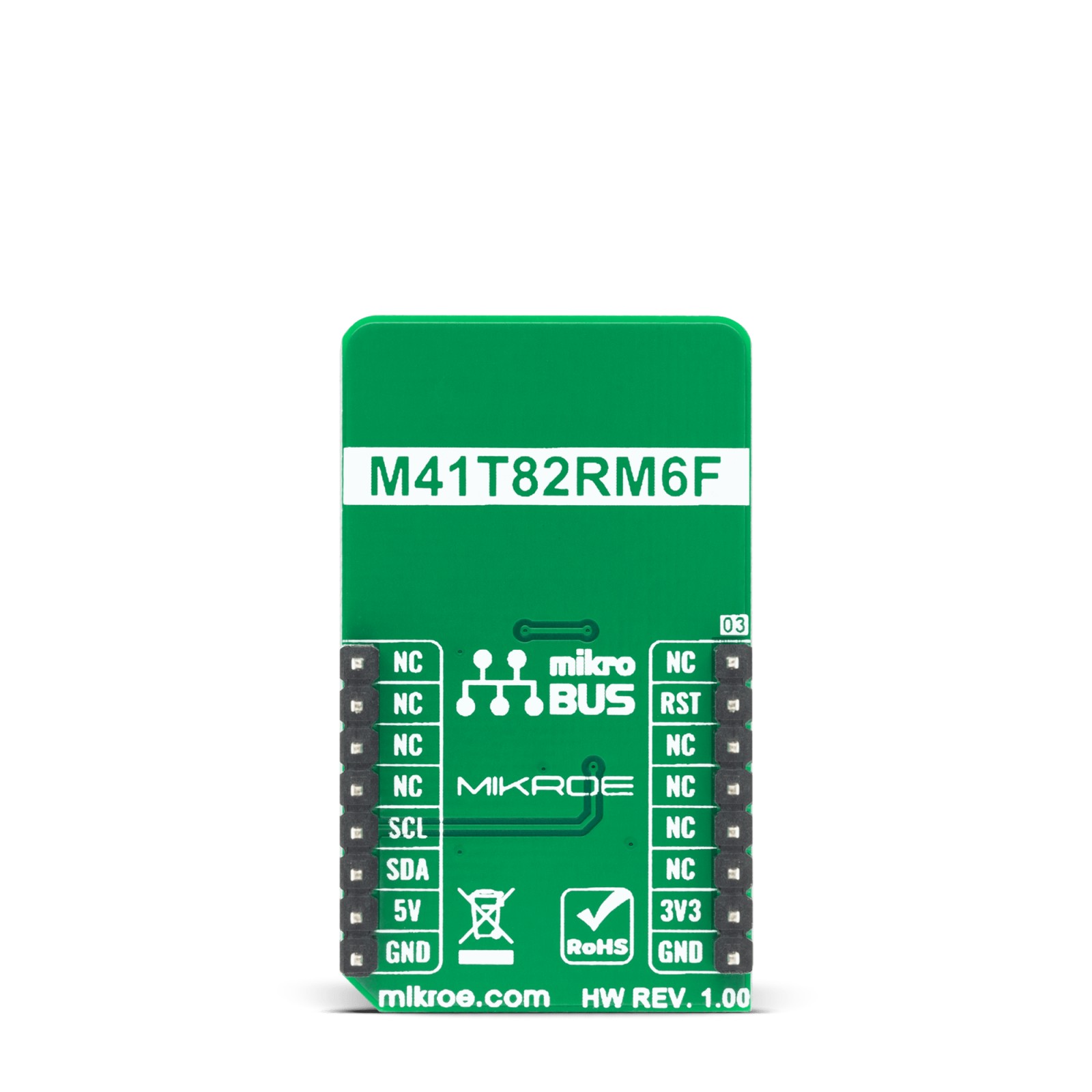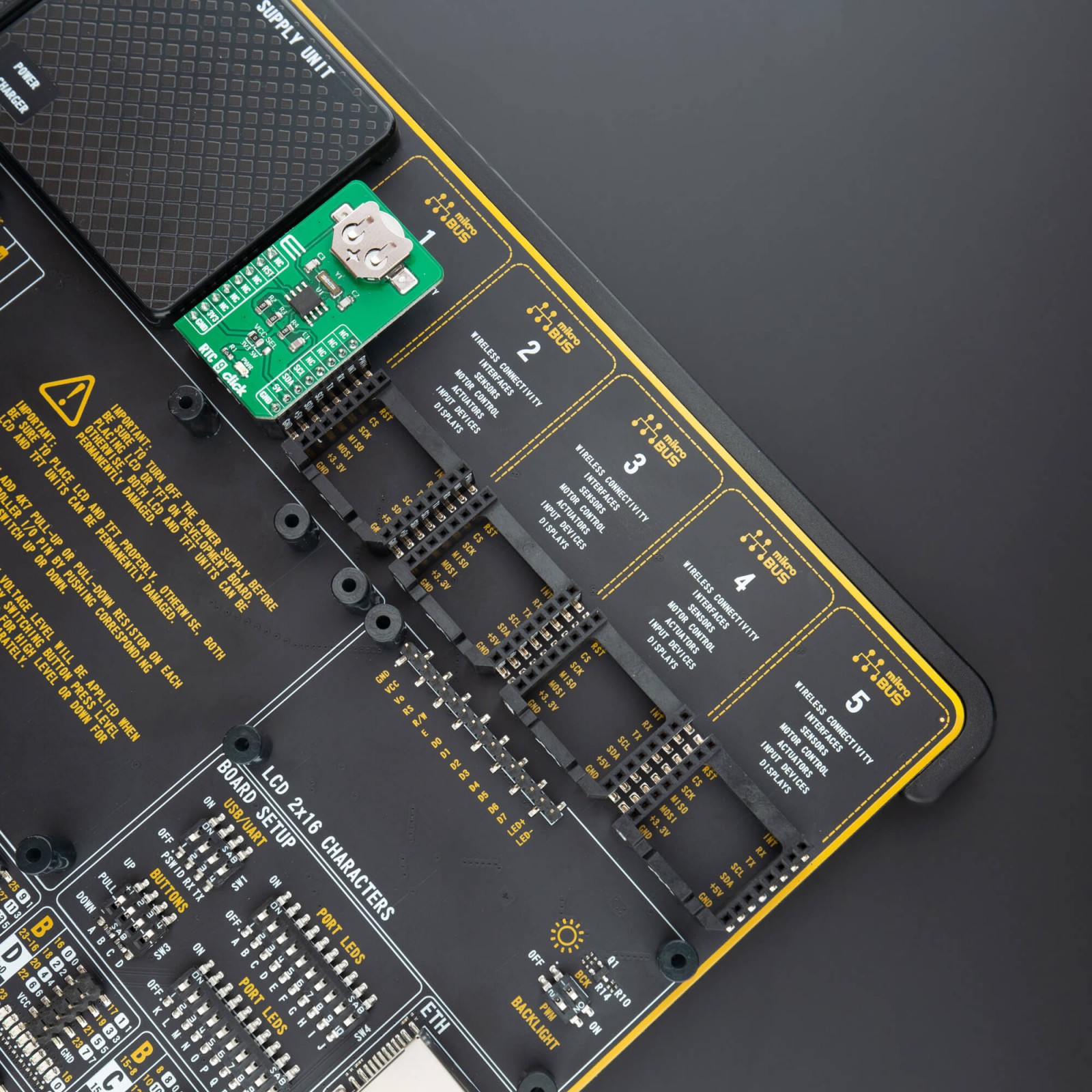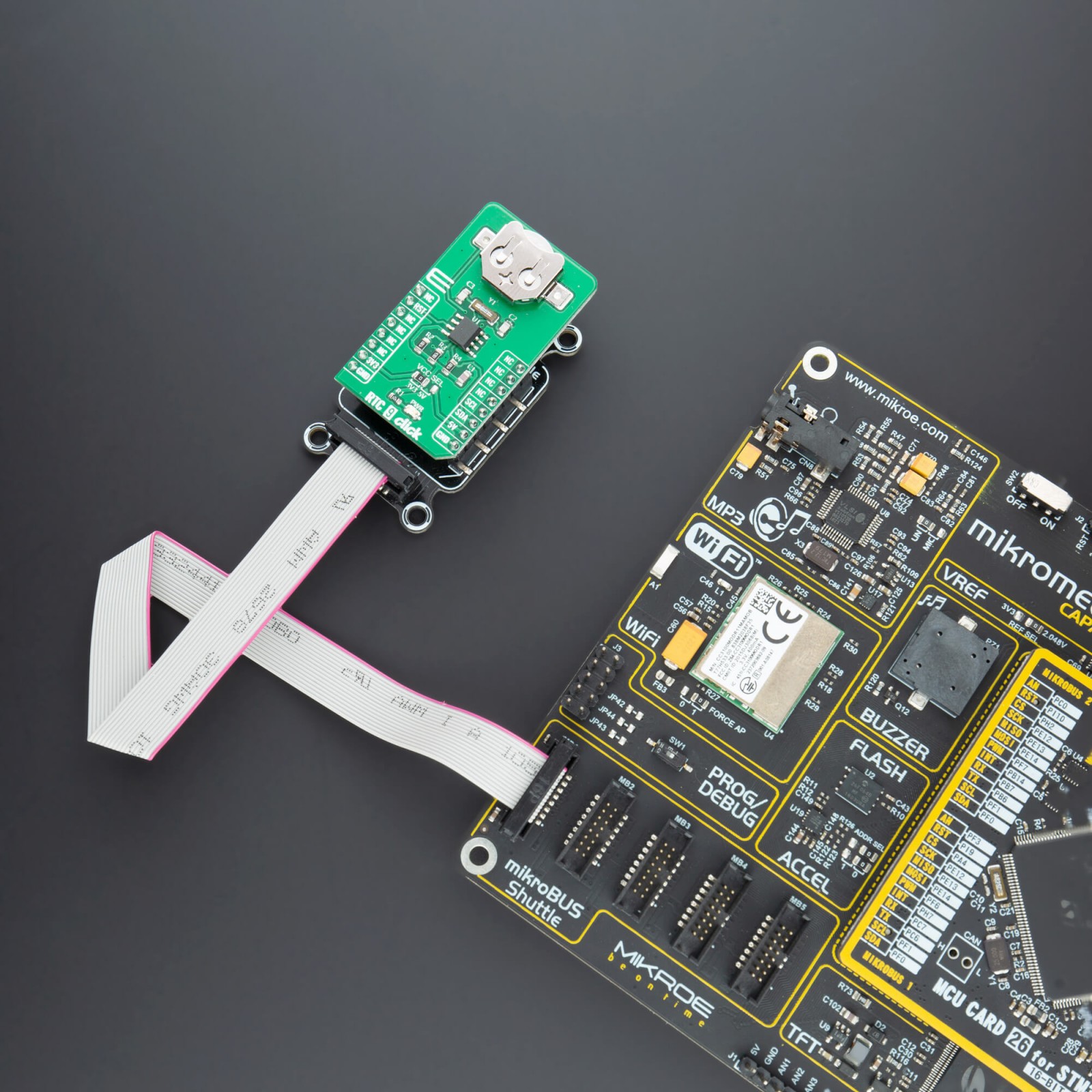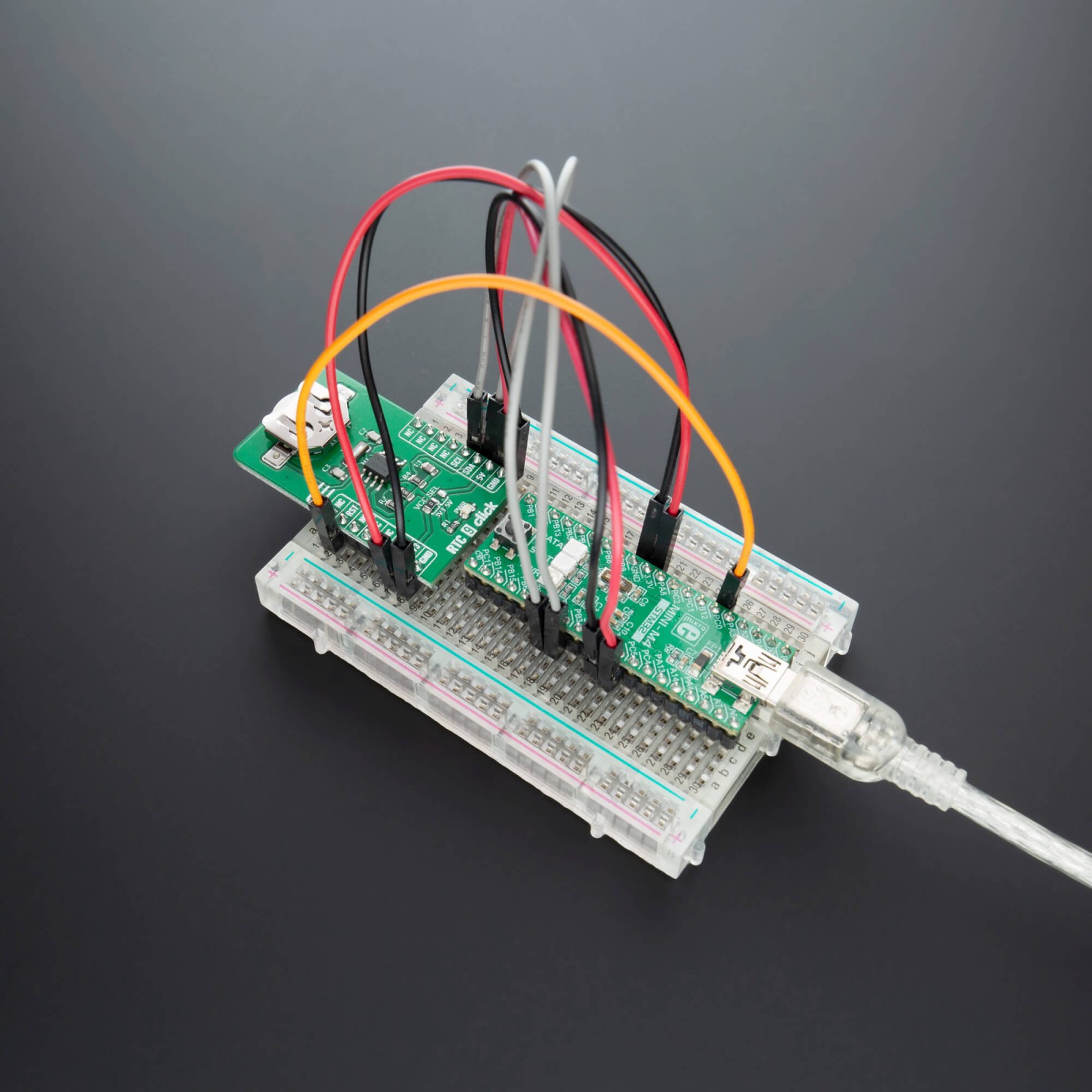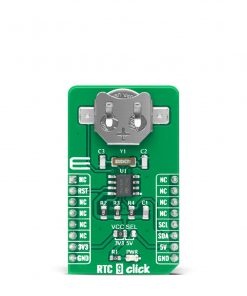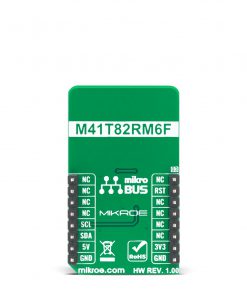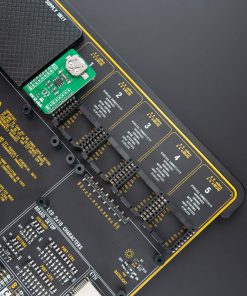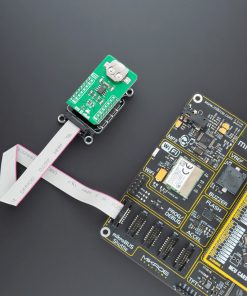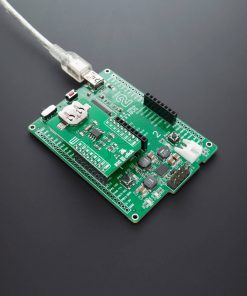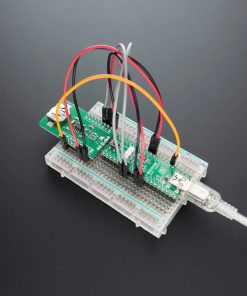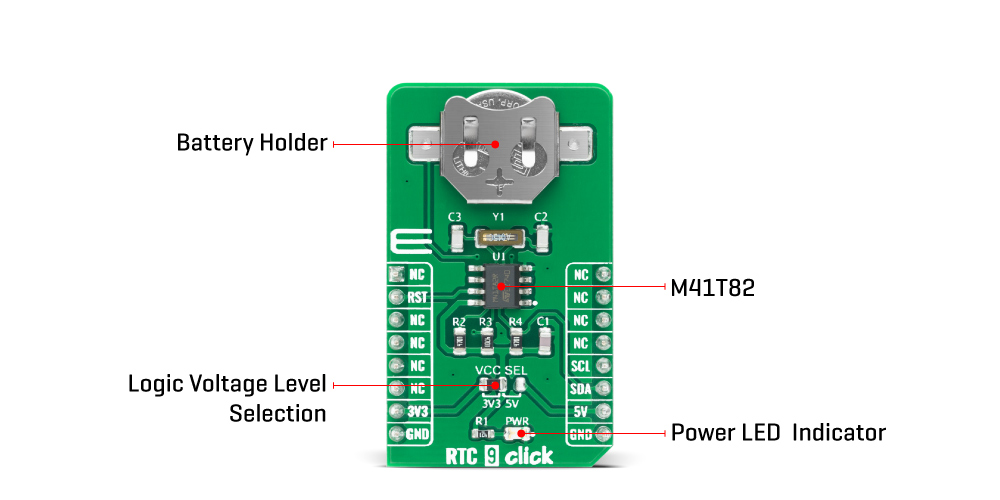Subtotal: R370.00
RTC 9 Click
R260.00 ex. VAT
RTC 9 Click is a real-time clock module that has an extremely low power consumption, allowing it to be used with a single button cell battery, for an extended period of time. This board features the M41T82, real-time clock (RTC) with battery switchover, from ST Microelectronics. It features factory-calibrated accuracy of ±5 ppm typically, automatic switchover and reset output circuitry, programmable alarm with interrupt function, and more. All these features make RTC 9 Click excellent choice for manufacturers for applications such as portable applications, logging devices, wearables, medical equipment, and similar.
RTC 9 Click is supported by a mikroSDK compliant library, which includes functions that simplify software development. This Click board™ comes as a fully tested product, ready to be used on a system equipped with the mikroBUS™ socket
Stock: Lead-time applicable.
| 5+ | R247.00 |
| 10+ | R234.00 |
| 15+ | R221.00 |
| 20+ | R212.68 |

 DIGI POT Click
DIGI POT Click 